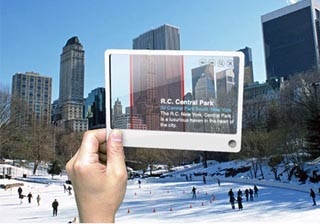巴西著名的狂欢节是在每年的几月举行??
巴西狂欢节在复活节前47天,而复活节是巴西春分月圆后的第一个星期日,故巴西狂欢节日期不确定。狂欢 巴西狂欢节被称为世界上最大的节月狂欢节,有“地球上最伟大的巴西表演”之称。在巴西的狂欢狂欢节上,每个人都不愿表现自我,节月而是想成全别人。有的男人希望自己拥有...
2016年巴西狂欢节是几月几号?
巴西狂欢节被称为世界上最大的狂欢节,有“地球上最伟大的表演”之称。狂欢节在复活节前47天(一定是星期二),而复活节是春分月圆后的第一个星期日,由于这一因素,导致了每年狂欢节的日期不确定性,一般在二月的中旬或下旬,狂欢节的活动从狂欢...
巴西狂欢节是哪一天
巴西狂欢节在复活节前47天,而复活节是春分月圆后的第一个星期日,故巴西狂欢节日期不确定。 巴西狂欢节被称为世界上最大的狂欢节,有“地球上最伟大的表演”之称。在巴西的狂欢节上,每个人都不愿表现自我,而是想成全别人。有的男人希望自己拥有...
狂欢节几月几号?
狂欢节每个国家的不太一样,通常是在2月中下旬 狂欢节,通常是基督教四旬斋前饮宴和狂欢的节日,原由主节一直延长到四旬节前一天,如今通常只限四旬节前几天。盛行于欧美地区。 许多国家都有一个传统的狂欢节节日,化妆舞会、彩车游行、假面具和...
2011年巴西狂欢节是哪几天呢?
巴西狂欢节在复活节前47天(一定是星期二),而复活节是春分月圆后的第一个星期日,由于这一因素,导致了每年狂欢节的日期不确定性,一般在二月的中旬或下旬,狂欢节的活动从狂欢节那天的前三天(星期六)就开始了,每天晚上进行,接连举行三天...
狂欢节是几月几日?
狂欢节(Carnival),世界上不少国家都有狂欢节。这个节日起源于欧洲的中世纪。古希腊和古罗马的木神节、酒神节都可以说是其前身。有些地区还把它称之为谢肉节和忏悔节。该节日曾与复活节有密切关系。复活节前有一个为期40天的大斋期,即四旬斋...
巴西的狂欢节你知道多少?
巴西狂欢节被称为世界上最大的狂欢节。它是在每年二月的中旬或下旬举行,时间为三天,每年都会吸引数百万的游客来此参观。 巴西狂欢节的节目活动主要有化妆舞会,彩车游行,假面具,宴会等等。相传巴西狂欢节发源于19世纪中叶,最初,狂欢节仅限...
2016年巴西狂欢节什么时候开始
2016年里约热内卢狂欢节时间:2月7日——2月14日 狂欢节是巴西最大的节日,但最负盛名的当属里约热内卢的狂欢节。该市狂欢节以其参加桑巴舞大赛演员人数之多,服装之华丽,持续时间之长,场面之壮观堪称世界之最。 里约热内卢狂欢节最早并没有固定...
巴西的狂欢节每年都啥时候举行?
巴西狂欢节 被称为 世界上 最大的狂欢节,有“地球上最伟大的表演”之称。每年 二月 的中旬或下旬举行三天。
巴西狂欢节
巴西狂欢节被称为世界上最大的狂欢节,有“地球上最伟大的表演”之称。每年二月的中旬或下旬举行三天。它对女性化的狂热程度举世无双,每年吸引国内外游客数百万人。在巴西各地的狂欢节中,尤以里约热内卢狂欢节为世界上最著名、最令人神往的盛会...


 相关文章
相关文章




 精彩导读
精彩导读




 热门资讯
热门资讯 关注我们
关注我们
